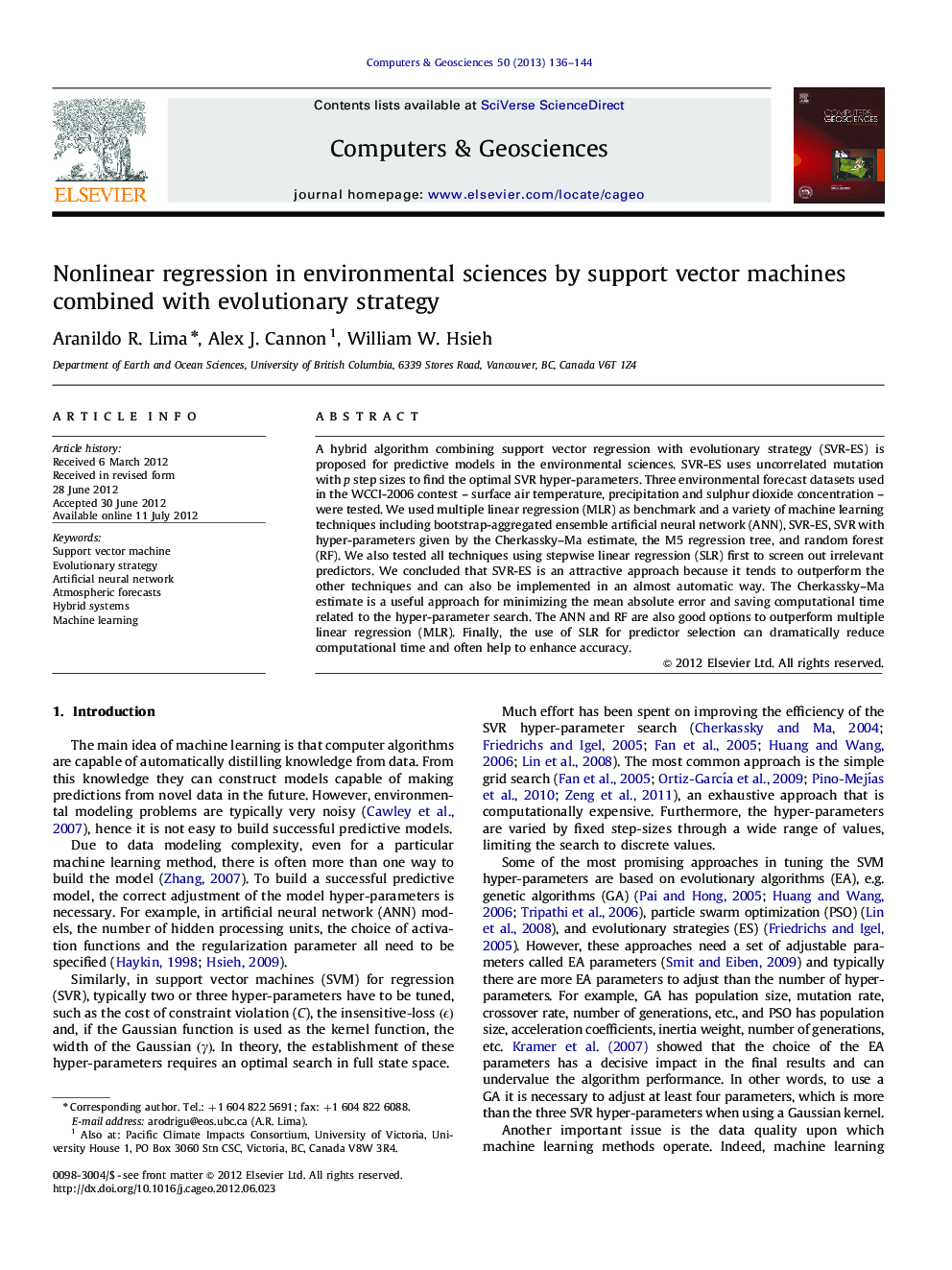| کد مقاله | کد نشریه | سال انتشار | مقاله انگلیسی | نسخه تمام متن |
|---|---|---|---|---|
| 507357 | 865117 | 2013 | 9 صفحه PDF | دانلود رایگان |

A hybrid algorithm combining support vector regression with evolutionary strategy (SVR-ES) is proposed for predictive models in the environmental sciences. SVR-ES uses uncorrelated mutation with p step sizes to find the optimal SVR hyper-parameters. Three environmental forecast datasets used in the WCCI-2006 contest – surface air temperature, precipitation and sulphur dioxide concentration – were tested. We used multiple linear regression (MLR) as benchmark and a variety of machine learning techniques including bootstrap-aggregated ensemble artificial neural network (ANN), SVR-ES, SVR with hyper-parameters given by the Cherkassky–Ma estimate, the M5 regression tree, and random forest (RF). We also tested all techniques using stepwise linear regression (SLR) first to screen out irrelevant predictors. We concluded that SVR-ES is an attractive approach because it tends to outperform the other techniques and can also be implemented in an almost automatic way. The Cherkassky–Ma estimate is a useful approach for minimizing the mean absolute error and saving computational time related to the hyper-parameter search. The ANN and RF are also good options to outperform multiple linear regression (MLR). Finally, the use of SLR for predictor selection can dramatically reduce computational time and often help to enhance accuracy.
► We propose a method for nonlinear regression in environmental sciences (SVR-ES).
► We use three environmental datasets to test five non-linear forecasting methods.
► SVR-ES has very good accuracy for downscaling precipitation and temperature.
► Random forest has good accuracy in modeling sulfur dioxide concentration.
Journal: Computers & Geosciences - Volume 50, January 2013, Pages 136–144